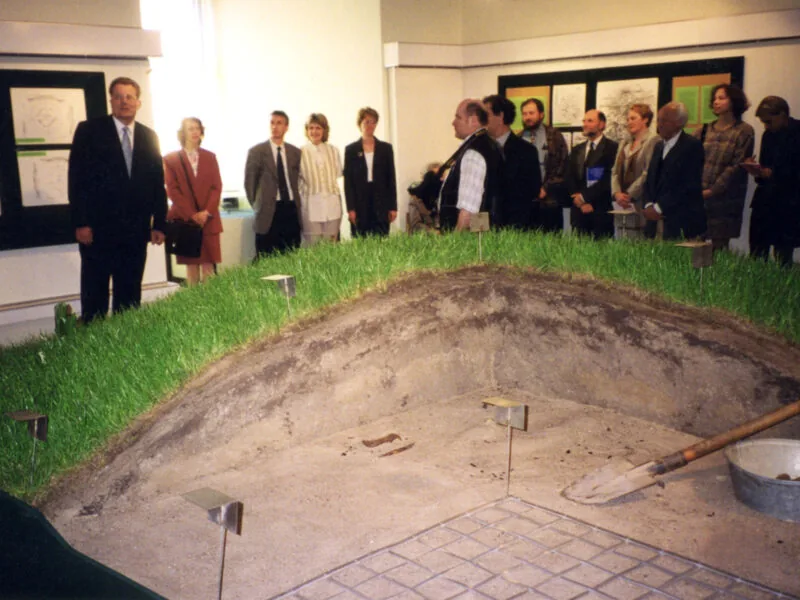
Museum of history of an independent state (since 1990)
In the 1990s, the museum reorganised its work in line with the new circumstances of an independent country. Gradually, a new permanent exhibition was created, international cooperation was developed, the tradition of scientific conferences was initiated and the museum’s publishing activities were revitalised.
The themes of the exhibitions in recent decades have been thematically diverse and covered both the earliest periods of Latvian history, as well as the 20th century. The project “Latvian Roots” was an significant part of the Museum’s exhibitions, research and publishing activities with the exhibitions “Curonians: Pirates, Merchants, Farmers” (1996), “Latgalians” (2000), “Livs” (2001), “Semigallians” (2003), “Selonians” (2005), “Towards the Latvian Nation” (2014).
The Museum specialists have also created several exhibitions abroad: “Saga of Latvia” (Sweden, 1991), “Latvian Folk Costume and Jewellery over Time” (Denmark, 1995), “Latgalians – Neighbours of the Krivichs” (Russia, 1999), “Latvian History, Art and Traditions” (France, 2001), “Three Stars – Three Crowns” (Riga, 2001; Stockholm, 2002), “Historical Portrait in Latvia” (Belarus, 2003; Lithuania, 2004), “Semigallians” (Lithuania, 2005), “Money in Latvia” (Austria, Estonia, 2007; Germany, 2008; Greece, 2014), “Treasures of Ancient Latvia” (Poland, 2007), “Ethnic Minorities of Latvia” (Germany, 2008), “Amber – the Jewel of the Baltic Sea” (Ukraine, Belarus, 2015), etc.
The Museum has a tradition of scientific readings and it organises international conferences; since the 1990s, the LNMH researchers have regularly participated in conferences, seminars and events organised by other institutions worldwide.
The Museum is an active publisher. In addition to exhibition catalogues, guides, monographs and collections of articles, it produces such serial publications as “Articles of the Latvian National Museum of History”, “Latvian Cultural Heritage in Foreign Repositories” and “History and Architecture of Riga Castle”.
The Āraiši Archaeological Park was a part of the LNMH from March 2008 until February 2017. In 2010, the Latvian Culture Museum “Dauderi”, located in a historical villa in Sarkandaugava, Riga, was added to the Museum. In January 2015, the Popular Front Museum with its collection of historical evidence of Latvia’s recent past was added to the LNMH.
Since the early 2000s, the Museum focused on Riga Castle restoration plans and the expansion of its premises, as well as the new storage facility.
A turning point for these plans was the devastating fire at Riga Castle in June 2013. After the fire, the LNMH collection was moved to temporary premises at Lāčplēša iela 106/108, while the permanent and temporary exhibitions were located at Brīvības bulvāris 32. For ten years, the temporary home was the scene of an active programme of exhibitions, the most ambitious of which was the joint exhibition of 68 Latvian museums, “Latvia’s Century” ‑ a dedication to the centenary of Latvia’s independence. The COVID-19 pandemic prompted the creation of a new digital resource website, eMuseum, which is regularly updated.
In 2020, part of the Museum moved to the newly built Museum Storage Facility at Pulka iela 8, Riga, where the Museum’s collection, researchers, restorers and administration are currently located.
In the summer of 2024, the Museum began its return to the reconstructed south wing of the oldest part of Riga Castle. The other wings of this part of the castle are still awaiting reconstruction so the Museum can offer visitors a new and even more comprehensive permanent Latvian history exhibition and other thematic exhibitions.